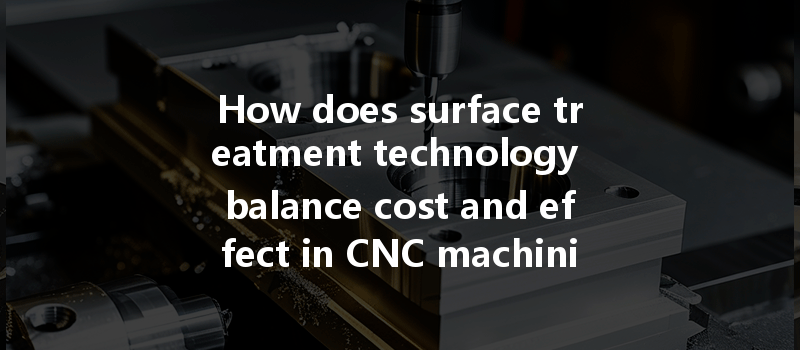Did you know that up to 80% of product failures in mechanical and structural applications can be traced back to surface-related defects? From corrosion resistance to wear and tear, the surface quality of machined parts plays a pivotal role in ensuring durability and longevity. In the age of advanced manufacturing, balancing cost and effect in surface treatment technology for CNC (Computer Numerical Control) machining is not just a luxury—it’s a necessity. In this extensive blog, we will dive deep into the nuances of CNC machining, the importance of surface treatment technology, and how to achieve that elusive balance to enhance product quality without breaking the bank.
Definition and Process Overview
CNC machining is an advanced manufacturing method that utilizes computer-controlled tools to produce highly precise components. It covers various processes including turning, milling, and drilling, enabling manufacturers to create complex geometries with minimal human intervention.
Importance of Precision in CNC Machining
The growing demand for accuracy in modern products cannot be overstated. In sectors like aerospace and medical devices, even the slightest deviations can lead to catastrophic failures. Precision machining ensures that each part fulfills its specifications, making surface treatment a crucial final step in the production process.
Types of Surface Treatments
Objectives of Surface Treatment

Evaluating Cost Factors
The cost of surface treatment can vary significantly based on technology, materials used, and the complexity of the processes involved. The three main components include:
Weighing the Effects
While one might consider cheaper surface treatments, they can lead to frequent failures, potentially more expensive in the long term. Therefore, understanding the interrelation between costs and the resultant quality of treated surfaces is essential in the decision-making process.
Selecting the Right Treatment
Choosing the optimal surface treatment involves assessing factors like:
Implementing Efficient Processes
Optimizing Materials
The choice of base materials can also affect surface treatment outcomes. For instance, understanding the material limits of aluminum versus steel can significantly impact the type of treatment chosen, impacting cost-effectiveness.
Aerospace Industry
In aerospace, certain aluminum alloys undergo anodizing to enhance corrosion resistance—crucial for components exposed to harsh environments. The initial cost might be higher, but the longevity gained proves to be cost-effective over time.
Automotive Sector
In the automotive industry, chrome plating is commonly employed to improve aesthetics and corrosion resistance in visible components. Manufacturers have reported a significant decrease in warranty claims related to cosmetic defects after implementing highly effective surface treatments.
Medical Devices
Surface treatments in medical devices are a non-negotiable quality aspect. Coating techniques that inhibit bacterial growth have been developed, deeming them an investment in product safety and compliance with rigorous regulatory standards.
Innovations on the Horizon
New technologies such as nanocoatings and environmentally friendly surface treatments are emerging. These advancements promise to yield superior repairability at lower costs.
Sustainability Considerations
As environmental concerns take center stage, manufacturers are exploring biodegradable and less toxic surface treatment options. This trend not only reduces environmental impact but can also lower future regulatory costs.
In summary, balancing cost and effect in surface treatment technology for CNC machining is pivotal for enhancing product quality. Through strategic selection of treatment methods, efficient processes, and careful consideration of materials, manufacturers can not only meet but exceed quality standards.
As we continue to innovate in the world of CNC machining, it becomes increasingly vital to understand the intricate relationship between surface treatments and final product integrity. This blog serves as a guide for those looking to make informed decisions that can lead to significant cost savings and improved product quality.
Stay ahead in this competitive landscape by considering these insights and strategies in your manufacturing processes. The impact of surface treatment technology will undoubtedly shape the future of CNC machining, ensuring that quality and cost remain balanced in the years to come.






